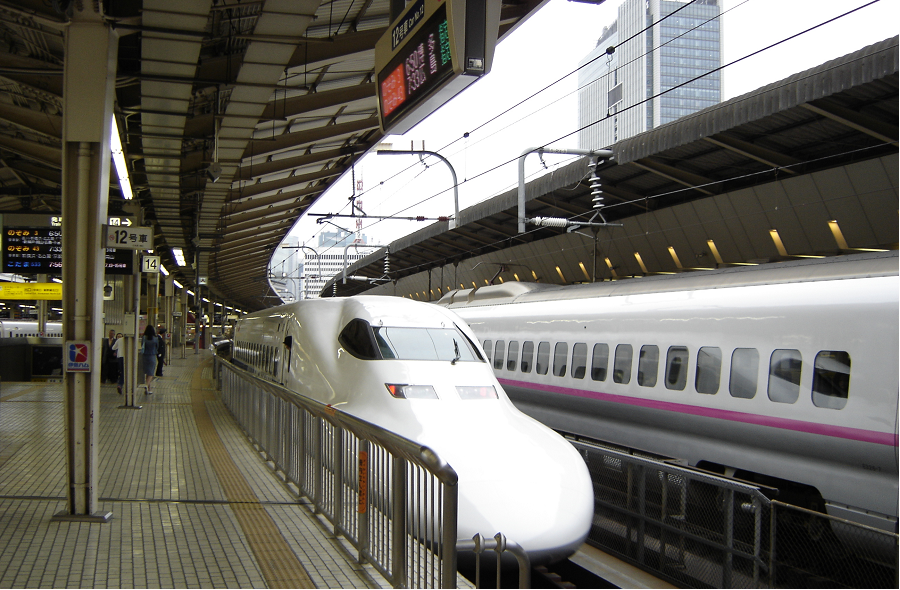Japanese high-speed trains. Shinkansen 700. Railway station in Tokyo 2004.
Part of the next generation of Shinkansen produced in the late ’90s, 700 series trains were jointly designed by JR Central and JR-West.
They were originally used on the Hakata Minami Line, the Sanyo Shinkansen, and the Tokaido Shinkansen, although they have since been withdrawn from service on the latter line. These trains are distinctive for their flat ‘duck-bill’ front nose, which was designed to reduce the piston effect when entering tunnels.
Max speed: 300km/h (186mph)
Year of introduction: 1999
Lines: Sanyo Shinkansen, Tokaido Shinkansen
Manufacturer: Hitachi, Kawasaki, Kinki Sharyo, Nippon Sharyo
The Shinkansen (Japanese: 新幹線), colloquially known in English as the bullet train, is a network of high-speed railway lines in Japan. Initially, it was built to connect distant Japanese regions with Tokyo, the capital, to aid economic growth and development. Beyond long-distance travel, some sections around the largest metropolitan areas are used as a commuter rail network. It is owned by the Japan Railway Construction, Transport and Technology Agency and operated by five Japan Railways Group companies.











